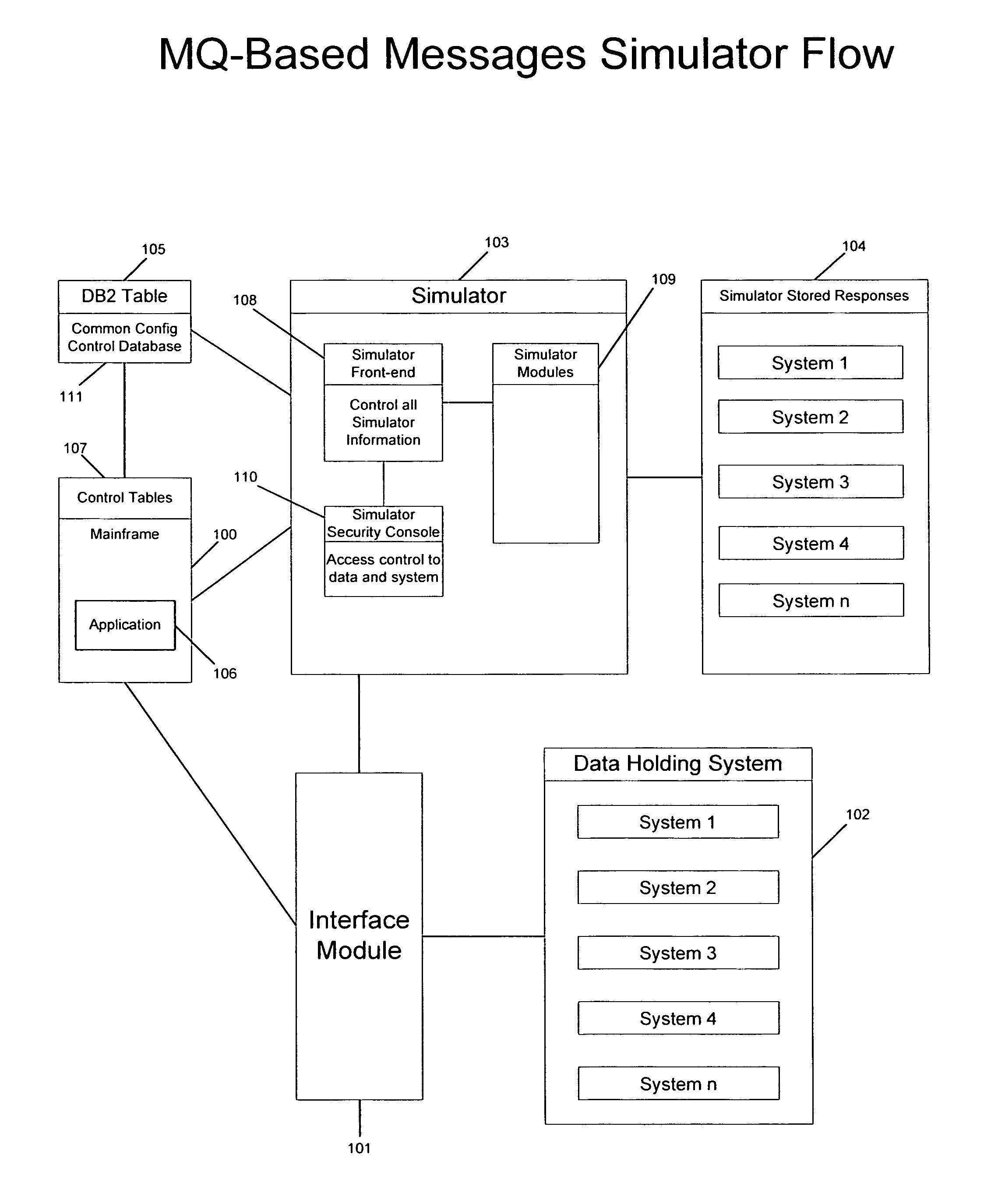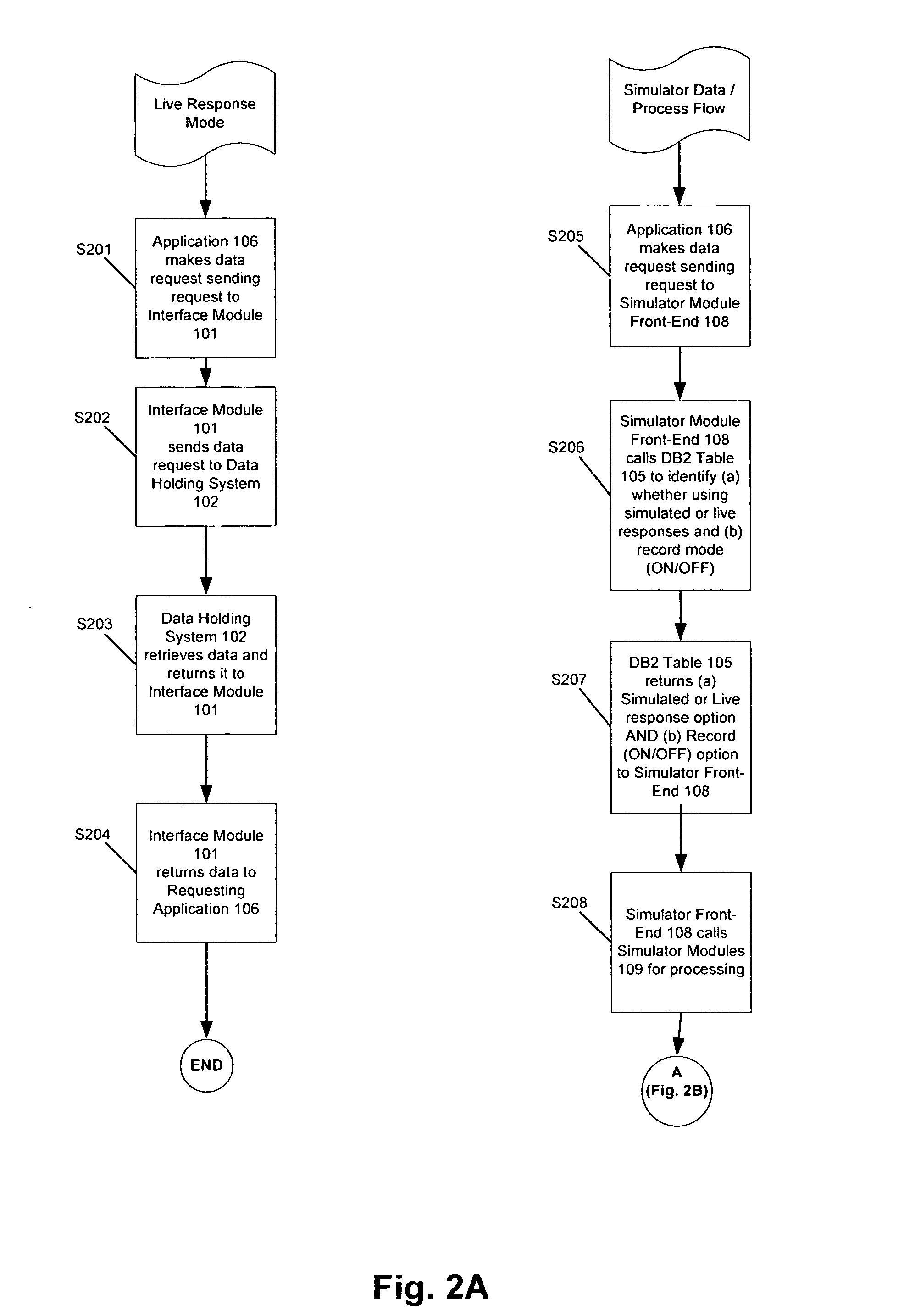System and method for testing a modification to a process using a simulator
a technology of process modification and simulator, applied in the field of system and method for testing a modification to a process using a simulator, can solve the problems of loss of business reputation and/or good, loss of customers, and likely to be of much greater magnitude, so as to reduce the required amount of interaction with the other system, reduce the cost of testing, and simplify the effect of setting up and running the tes
- Summary
- Abstract
- Description
- Claims
- Application Information
AI Technical Summary
Benefits of technology
Problems solved by technology
Method used
Image
Examples
example implementations
[0093
[0094]The present invention, or any part(s) or function(s) thereof, may be implemented using hardware, software or a combination thereof and may be implemented in one or more computer systems or other processing systems. However, the manipulations performed by the present invention were often referred to in terms, such as adding or comparing, which are commonly associated with mental operations performed by a human operator. No such capability of a human operator is necessary, or desirable in most cases, in any of the operations described herein which form part of the present invention. Rather, the operations are machine operations. Useful machines for performing the operation of the present invention include general purpose digital computers or similar devices.
[0095]In fact, in one embodiment, the invention is directed toward one or more computer systems capable of carrying out the functionality described herein. An example of a computer system 500 is shown in FIG. 5.
[0096]The...
PUM
 Login to View More
Login to View More Abstract
Description
Claims
Application Information
 Login to View More
Login to View More - R&D
- Intellectual Property
- Life Sciences
- Materials
- Tech Scout
- Unparalleled Data Quality
- Higher Quality Content
- 60% Fewer Hallucinations
Browse by: Latest US Patents, China's latest patents, Technical Efficacy Thesaurus, Application Domain, Technology Topic, Popular Technical Reports.
© 2025 PatSnap. All rights reserved.Legal|Privacy policy|Modern Slavery Act Transparency Statement|Sitemap|About US| Contact US: help@patsnap.com



